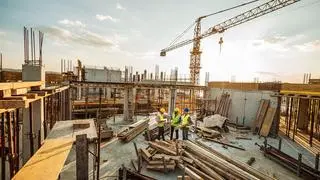A newly-developed high-capacity anode that is extremely stable at high rates, could be a potential alternative to the commercial graphite anode. It can be used as a substitute for safe, stable and rapid-charging next-generation LIBs with higher storage capacity. A team at the Centre for Nano and Soft Matter Sciences (CeNS), Bengaluru, led by Dr HSS Ramakrishna Matte, has developed this high-capacity anode. The anode is a ternary FeOOH-rGO-MnO2 composite anode made from a simple low-temperature synthetic procedure.
The work, which is published in ACS Applied Energy Materials, showcases the stable performance of the anode, wherein it delivered capacities of 9,56,842, and 688 mAh g-1 (milliampere-hours per gram mass-unit of specific capacity) at 1, 2, and 5 A g-1 respectively for 200 cycles along with cycling stability of 900 mAh g-1 at 1 A g-1 for 100 cycles.
Take a liberal pinch of salt

Can we ever add as much salt as we like to our food without affecting our health? Yes, we can—the answer lies in low sodium salt. The Central Salt and Marine Chemicals Research Institute (CMSCRI), Bhavnagar, has developed a low sodium salt called ‘Saloni K’. It is a mixture of sodium chloride and potassium chloride,“useful for those who have been advised to eat less common salt,” CMSCRI says.
Saloni K is made from Slicornia brachiata, a high salt-accumulating and edible oil bearing plant and Kappaphycus alvarezii, a red algae.
The know-how for cultivation of the plants and making Saloni K is market ready. While it has been transferred to a local small-scale company, CMSCRI is open to technology transfer.
Bone-friendly implants

The problem with putting metal implants into our bodies is that they take most of the mechanical load, leaving little for the bones around them to bear. Though it may sound very kind to the bones, it is not actually so. Bones need mechanical load to grow strong and because of the “stress shielding” offered by the metal implants, the natural bones around them die out and dissolve.
Researchers at IIT-M have found a solution to this problem by using a technique called ‘multi-phase topology optimisation’—a simulation technique that determines the optimal distribution of two or more different materials in a combination under thermal and mechanical loads. Prof Sourav Rakshit and S Rajaram of the Department of Mechanical Engineering have used ‘macroscale optimisation’ and ‘microscale optimisation’ on the pelvic bone, with good results, according to a paper produced by them.
Solar cell shows 26% efficiency

The National Centre for Photovoltaic Research and Education at IIT-Bombay has developed a solar cell that combines a perovskite solar cell and a conventional crystalline silicon cell. The cell has been demonstrated an efficiency of over 26 per cent. Comparatively, the best cells in the market have efficiencies of 22 per cent. “We have fabricated a stable 4T (four terminal) Si/perovskite tandem solar cells which provides outstanding stability in the dark as well as continuous heating conditions” says Prof Dinesh Kabra, who led the research at IIT-B. The cell could be “the gateway for use in niche applications like building integrated photovoltaics (BIPV)”, says Kabra.








Comments
Comments have to be in English, and in full sentences. They cannot be abusive or personal. Please abide by our community guidelines for posting your comments.
We have migrated to a new commenting platform. If you are already a registered user of TheHindu Businessline and logged in, you may continue to engage with our articles. If you do not have an account please register and login to post comments. Users can access their older comments by logging into their accounts on Vuukle.